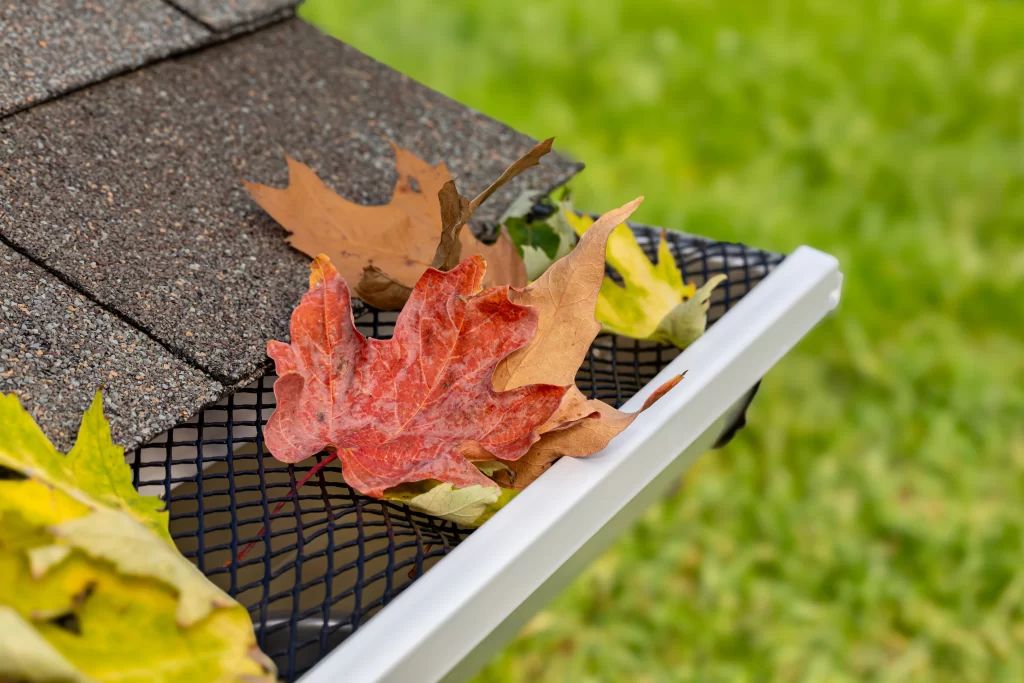A well-maintained roof protects your home, ensures safety, and saves money. Moreover, shifting climate patterns and new environmental challenges make proactive roof maintenance more important than ever in 2025.
Why Roof Maintenance is Critical
Roof maintenance is vital in safeguarding your home from structural damage, water leaks, and other costly issues. Regular upkeep helps to:
- Protect Your Investment: Your roof is one of the most significant components of your home. Proper maintenance prevents expensive repairs or premature replacements.
- Prevent Water Damage: Neglected roofs can cause leaks that lead to water damage, affecting your ceilings, walls, and insulation.
- Extend Roof Lifespan: Regular maintenance and quick repairs help your roof last longer, whether it’s made of shingles, metal, or tiles.
- Boost Energy Efficiency: A well-maintained roof helps control indoor temperatures and lowers energy costs.
Key Components of Roof and Gutter Maintenance
Proper roof maintenance goes beyond just checking the shingles. Here are the key elements:
Regular Inspections
Regular inspections—ideally in spring and fall—are critical for identifying issues before they escalate. Look for signs like:
- Cracked or missing shingles.
- Rust or corrosion on metal roofs.
- Loose or damaged flashing around chimneys or vents.
- Puddles or standing water on flat roofs.
Hiring a roofing contractor ensures a thorough inspection and professional advice on necessary repairs. Advanced tools like drones equipped with cameras can also provide a detailed view of hard-to-reach areas.
Gutter Cleaning and Maintenance
Clean your gutters regularly to ensure proper water flow away from your home. Clogged gutters can lead to water pooling on your roof, increasing the risk of leaks and water damage. Experts recommend:
- Cleaning gutters at least twice a year.
- Installing gutter guards to reduce debris buildup.
- Inspect and adjust downspouts to direct water away from your foundation.
- Inspecting for signs of rust or sagging gutters that may need replacement.
Removing Debris
Tree branches, leaves, and other debris can accumulate on your roof, trapping moisture and leading to potential damage. Regularly remove debris to:
- Prevent mold and algae growth.
- Avoid damage caused by heavy branches.
- Maintain proper drainage and airflow.
Using a roof rake or hiring a professional can make this process safer and more efficient.

Roof Maintenance Tips for 2025
Here are some practical tips to help you maintain your roof this year:
- Check for Signs of Wear and Tear: Inspect your roof for cracked or curled shingles, dark spots, or sagging areas. These are common signs of potential problems.
- Ensure Proper Ventilation: Adequate ventilation prevents moisture buildup, which can lead to rot and other issues. Make sure vents are clear and functional.
- Invest in Timely Repairs: Address small problems, like loose shingles or minor leaks, as soon as they’re identified. This prevents bigger, more expensive repairs down the line.
- Trim Overhanging Tree Branches: This reduces the risk of damage from falling limbs. It also reduces debris buildup.
- Apply Protective Coatings: Adding a waterproof or reflective coating can improve durability and energy efficiency.
Seasonal Maintenance Schedule
A seasonal approach to roof maintenance ensures that your roof stays in excellent condition throughout the year.
Spring Maintenance
- Inspect your roof for damage caused by winter weather.
- Remove debris like leaves and branches.
- Check your gutters and ensure they’re clean and functioning properly.
- Look for any signs of pest infestations that may have developed during colder months.
Summer Maintenance
- Examine your roof for damage caused by heat and UV exposure.
- Check attic ventilation to ensure proper airflow.
- Inspect and clean skylights to maximize natural light and prevent leaks.
Fall Maintenance
- Clean gutters thoroughly to prepare for rain and snow.
- Inspect shingles and flashing for potential damage.
- Trim tree branches back to prevent damage during storms.
- Add extra insulation to your attic if needed to prepare for colder temperatures.
Winter Maintenance
- Monitor for ice dams, which can cause significant roof and gutter damage.
- Remove snow buildup safely using a roof rake.
- Check for leaks or drafts inside your home that could indicate roof damage.
Signs It’s Time to Call a Roofing Company
While regular maintenance can prevent many issues, some problems require professional intervention. Call a roofing contractor if you notice:
- Persistent roof leaks or water stains inside your home.
- Visible damage like missing shingles or sagging areas.
- Moss, algae, or other growth on your roof.
- Signs of rotting or structural damage.
- Sudden spikes in energy bills could indicate poor insulation or ventilation.
Professional roofing companies can also provide annual maintenance plans to keep your roof in top condition year-round.
Roof Maintenance for Different Materials
Different roofing materials require unique maintenance approaches. Here are tips for some of the most common types:
- Asphalt Shingles: Check for curling or cracking. Replace damaged shingles promptly. Clear off granules that may accumulate in gutters, as these indicate wear.
- Metal Roofs: Inspect for rust and verify the integrity of all fasteners.
- Tile Roofs: Inspect for broken or loose tiles and clean off moss or algae buildup carefully. Avoid walking directly on tiles to prevent breakage.
- Flat Roofs: Ensure proper drainage and check for pooling water. Seal any cracks in the membrane to prevent leaks.

Preventative Measures for 2025
In 2025, advancements in technology and best practices make roof maintenance more manageable than ever. Consider these preventative steps:
- Use Technology: Roof sensors and drones can help monitor the condition of your roof and identify potential issues.
- Install Gutter Guards: These reduce the frequency of gutter cleaning and prevent clogs.
- Trim Nearby Trees: Keep branches well away from your roof to avoid damage and debris buildup.
- Invest in Durable Materials: Modern roofing materials can withstand extreme weather and reduce the need for frequent repairs.
When Roof Repairs or Replacements Are Necessary
Sometimes, maintenance isn’t enough, and repairs or replacements become necessary. Here’s how to decide:
- Repairs: Suitable for minor issues like replacing a few shingles or fixing small leaks.
- Replacements: Necessary if your roof is nearing the end of its lifespan or has extensive damage.
When hiring a roofing contractor, check reviews, verify licenses, and get multiple quotes to ensure quality work. A professional can also help you choose the best materials and techniques for your specific needs and budget.
Extend the Life of Your Roof
Roof maintenance continues to be all about staying proactive and informed. Follow seasonal maintenance, clean your gutters, and fix problems quickly to help your roof last longer and avoid costly repairs.
Don’t hesitate to consult a roofing company for inspections or repairs when needed. With regular care and attention, your roof will protect your home for years to come. Use new technologies and prevention methods to keep your home safe through any challenges this year.


